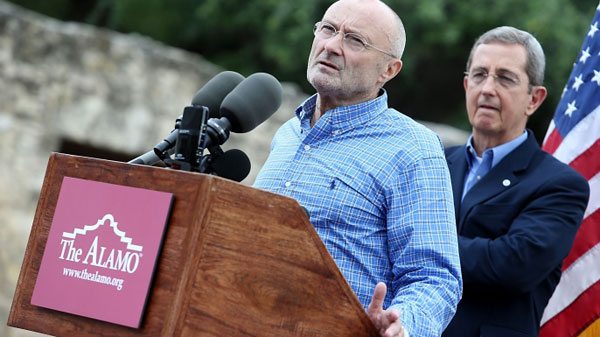
December 10, 2017; San Antonio Express-News and Texas Tribune
The controversy swirling around the Alamo continues. This time, the battle centers on how the historic site is being managed and a demand for more transparency and greater public access to the decision-making and management of the project.
The project is currently managed by the Alamo Trust, a subsidiary of the relatively new Alamo Endowment. A master plan for renovation and restoration of the historic site was recently unveiled, and the state legislature passed a two-year budget allocating as much as $75 million to help implement the plan, which is estimated to have a total cost of $450 million. George P. Bush (son of former Florida Governor Jeb Bush) serves as the board president of the Endowment in his role as the Texas Land Commissioner, a role he was elected to in 2014.
In March of 2015, almost as soon as he was elected, Mr. Bush fired the Daughters of the Republic of Texas (DRT), who had been managing the site since 1905. His argument is that the master plan that had been developed could not be adequately managed by that small organization. So, the Alamo Endowment and its subsidiary, the Alamo Trust, were created and given management of the landmark. As many as 70 people were hired right away, although the 2016 IRS Form 990 suggests the organization has only $1.5 million in assets and a budget of under $300,000.
All of this dates back to 2014, when it was announced that a deal had been struck and the rock star Phil Collins would be donating a large portion of the collection of Alamo artifacts he had amassed over more than 20 years. The caveat is that if the collection is broken up or if the Alamo itself cannot remain solvent, the collection must be returned. The facility does not have space to adequately house the collection, and the DRT had been struggling financially for many years, hence the need for the new master plan.
Sign up for our free newsletters
Subscribe to NPQ's newsletters to have our top stories delivered directly to your inbox.
By signing up, you agree to our privacy policy and terms of use, and to receive messages from NPQ and our partners.
Coming back to the present day, having the site managed by a nonprofit that’s the subsidiary of an endowment does seem arcane. Texas state legislators are upset that the public money they committed to the project is being managed behind closed doors, as the nonprofit Trust is not subject to Texas’s sunshine laws. The legislators are calling for changes, such as open meetings at the Trust, or even for the staff to become employees of the state. Ultimately, there is nothing new here, as the DRT was a nonprofit organization, after all, and so was not subject to the sunshine laws either.
What may be at the core of this issue is what the focus of the restored facility will be. What are visitors going to learn when they come to the Alamo? The DRT long focused the site’s exhibits on the battle in 1836 known for the deaths of many Texan “heroes.” Of course, the Alamo has a much longer history than that, one involving a variety of different cultures over the years. This is very specifically the focus of the Request for Qualifications to develop a master plan when it was issued in April of 2015.
When demanding greater transparency from the Alamo Trust overseen by Mr. Bush, the legislators seem upset by this broader focus. Sen. Paul Bettencourt (R-Houston), for example, is quoted as saying, “The public as well as the senators are making clear that the emphasis has to be on the battle.”
So, is this a battle over the transparent management of public funds, or is it about maintaining the myth of the Alamo? The decision-makers might take a trip to Scotland for some answers. There, a battlefield, Culloden Moor, is the site of a visitor center and museum that tells both sides of the story of the battle; one side is the Scots version of the story, and the other side is the British version. It is an award-winning museum that gives a rounded picture of the site’s importance.—Rob Meiksins













